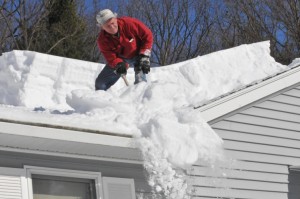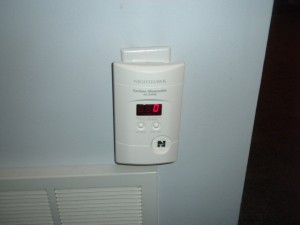Can my roof collapse from too much snow load? It’s possible, but highly unlikely.
Since about 1950, cold climate states must adhere to engineering principles that configure the structure of the roof. They are based upon the highest potential roof snow load in your area. The building code will then require the roof be designed and sized to safely meet or exceed those live snow loads. In Minnesota that load is 42 pounds per square foot north of a line that crosses the state just south of Hinckley. The south side of the line which includes Minneapolis and St Paul is 35 pounds per square foot.
How deep would the snow be if there was 35 pounds of snow per square foot on the roof?
Well…if it was light snow it would be 5 feet deep! If it was medium or normal density it would be 2.5 feet deep and if it was tightly packed, it would be more than 1.5 feet deep. The measurement by the way would be uniform over the whole roof. In the real world there will be places that are less deep or less dense. These include areas that are covered by roof overhangs, spots protected from wind, and behind chimneys and dormers. So, if your roof meets current code, you have little to worry about.
 However, if your home is hundred years or so old or you have some reason to doubt that it has been built to code, you may wish to remove some snow. Remember though, if you are removing snow you are removing a very good insulator.
However, if your home is hundred years or so old or you have some reason to doubt that it has been built to code, you may wish to remove some snow. Remember though, if you are removing snow you are removing a very good insulator.
If you must remove snow use a roof rake with extension handles. Never stand on the roof or scrape the roof bare as this may damage the shingles. Be very cautious about letting someone who comes knocking on your door remove the snow from your roof. Check their credentials. Make sure they have insurance.
This could become a very expensive mistake!
Doug Hastings
MN Home Inspector, Minneapolis & St. Paul
ASHI certified inspector, ACI
Kaplan University, Home Inspection Lead Instructor
Rob ‘Pops’ Leslie
Kaplan Professionals, Retired



